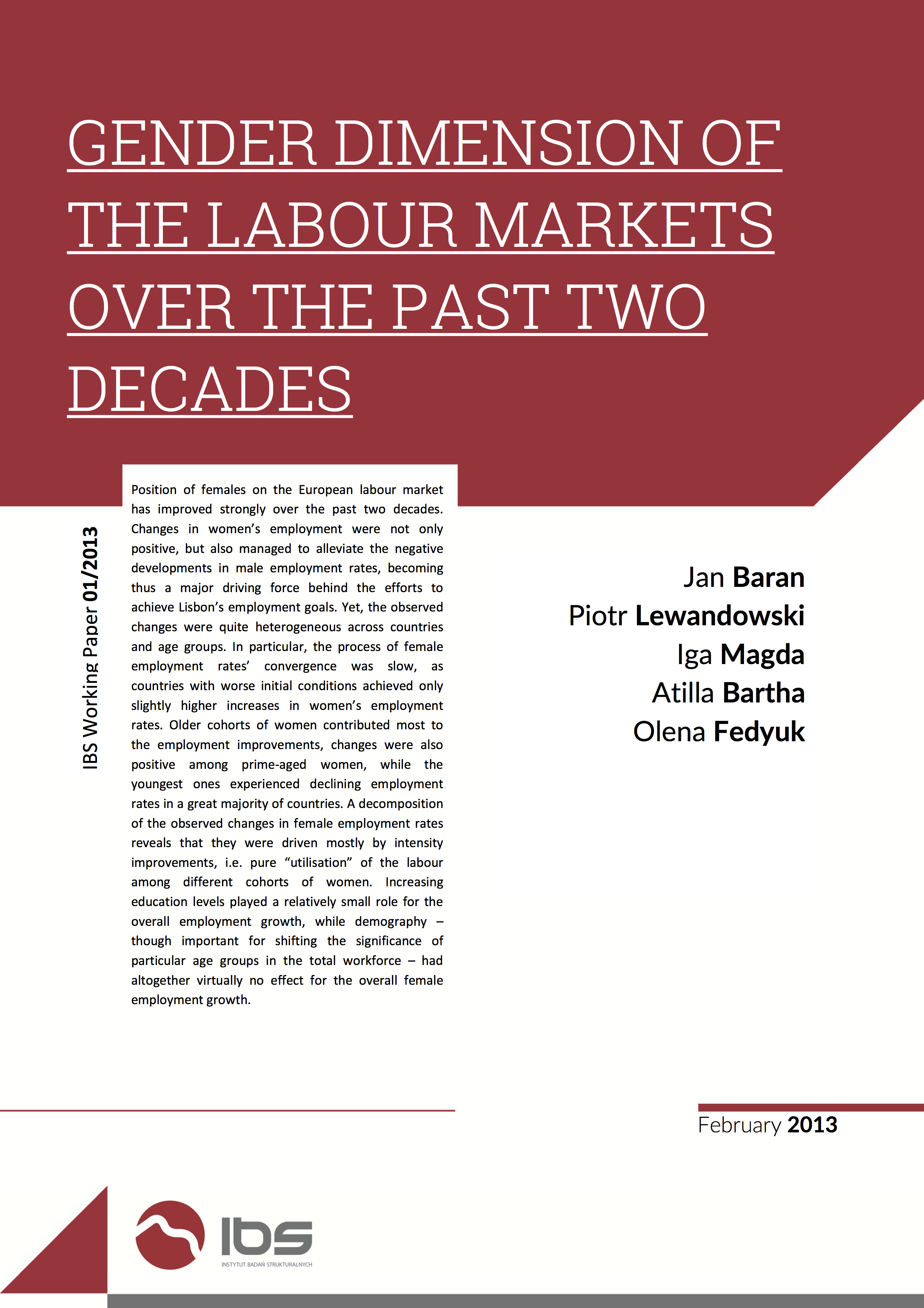Position of females on the European labour market has improved strongly over the past two decades. Changes in women’s employment were not only positive, but also managed to alleviate the negative developments in male employment rates, becoming thus a major driving force behind the efforts to achieve Lisbon’s employment goals. Yet, the observed changes were quite heterogeneous across countries and age groups. In particular, the process of female employment rates’ convergence was slow, as countries with worse initial conditions achieved only slightly higher increases in women’s employment rates. Older cohorts of women contributed most to the employment improvements, changes were also positive among prime-aged women, while the youngest ones experienced declining employment rates in a great majority of countries. A decomposition of the observed changes in female employment rates reveals that they were driven mostly by intensity improvements, i.e. pure “utilisation” of the labour among different cohorts of women. Increasing education levels played a relatively small role for the overall employment growth, while demography – though important for shifting the significance of particular age groups in the total workforce – had altogether virtually no effect for the overall female employment growth.

